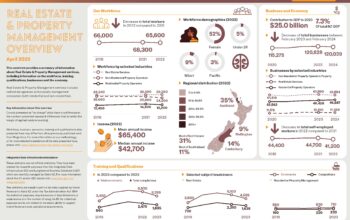Our latest industry overview provides key data on the workforce, businesses and economy, and the training and qualifications as it relates to the industry.

Real Estate and Rental Overview
Note: An overview of Rental Services will be provided at the next update of the Service Sector overviews.
Developed to support Ringa Hora’s engagement with the Real Estate and Property Management sector, these counts provide a deeper view of the sector than what is covered in the sector overview above.